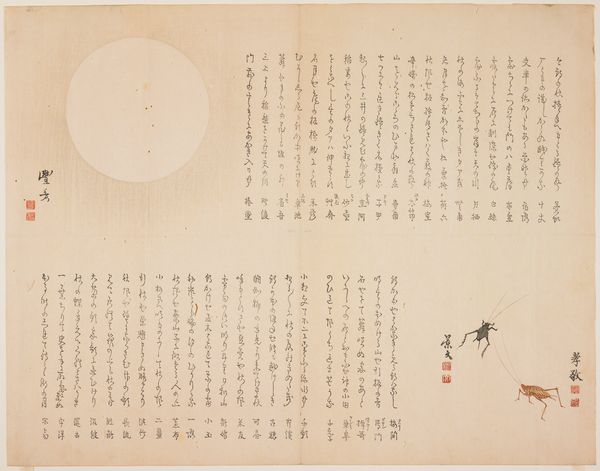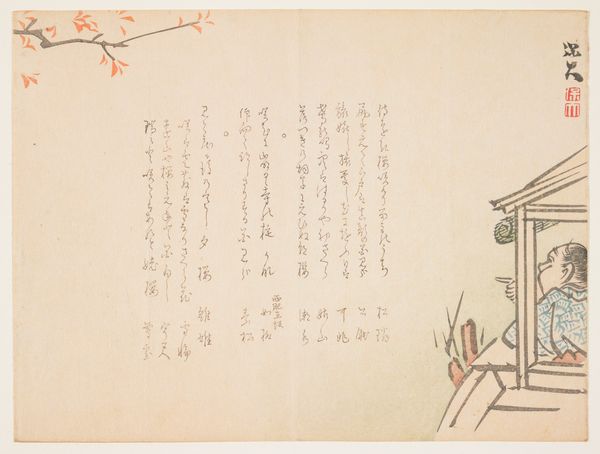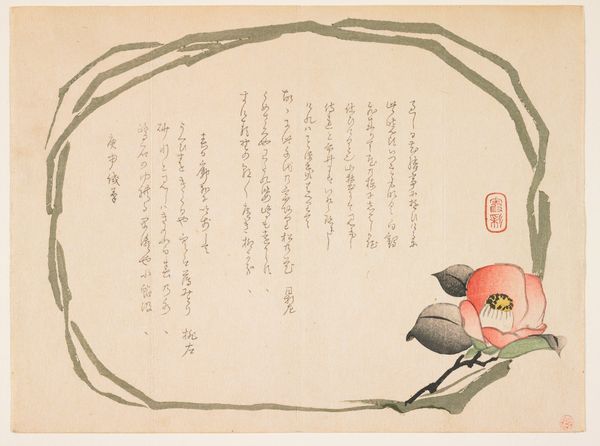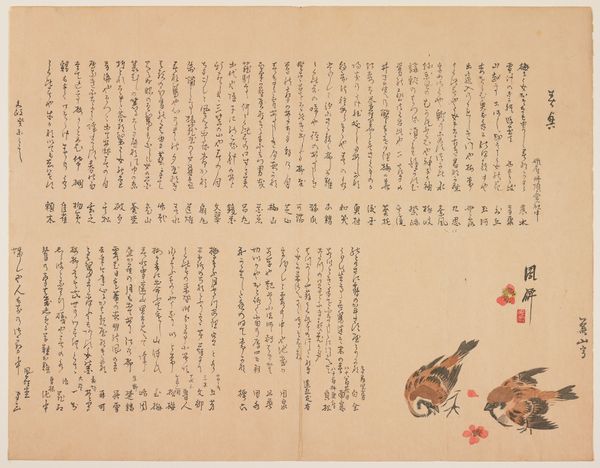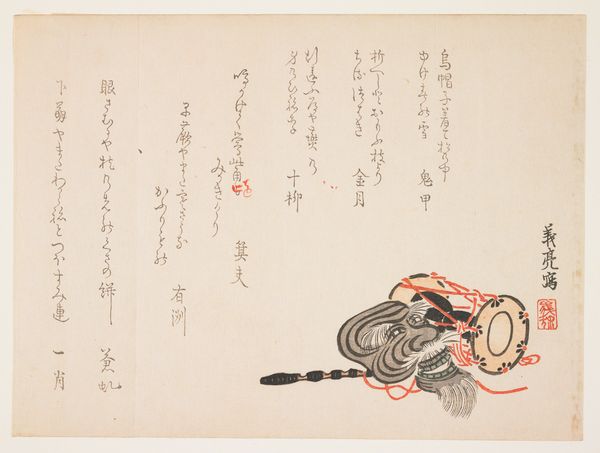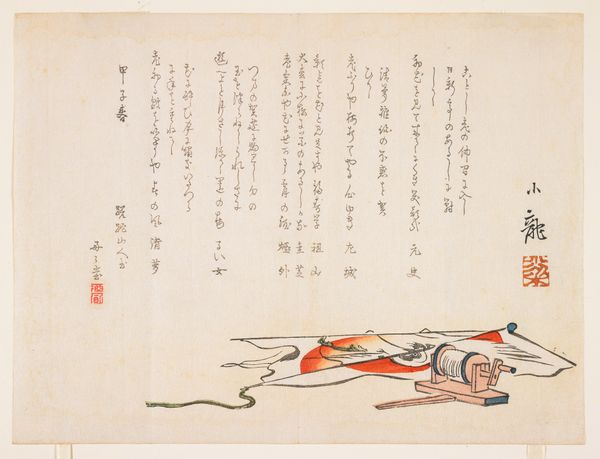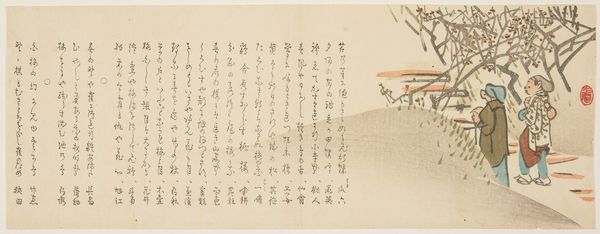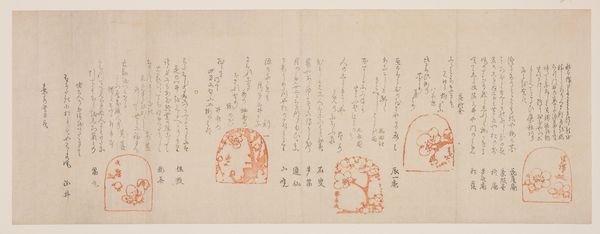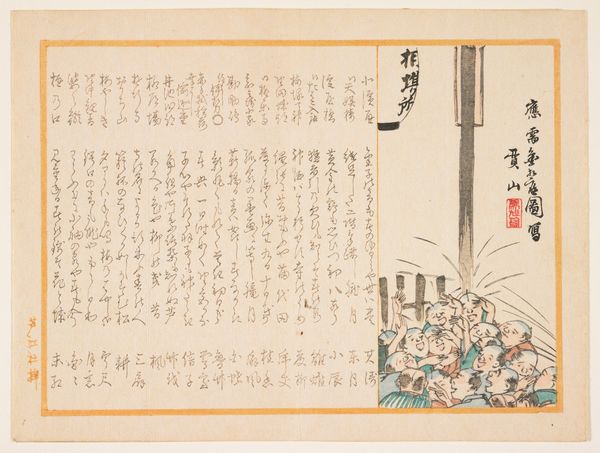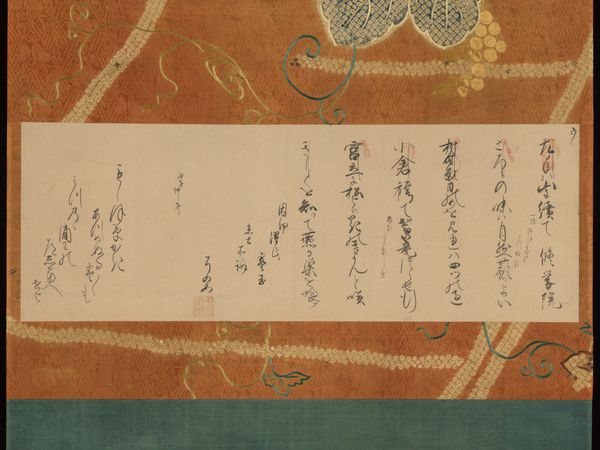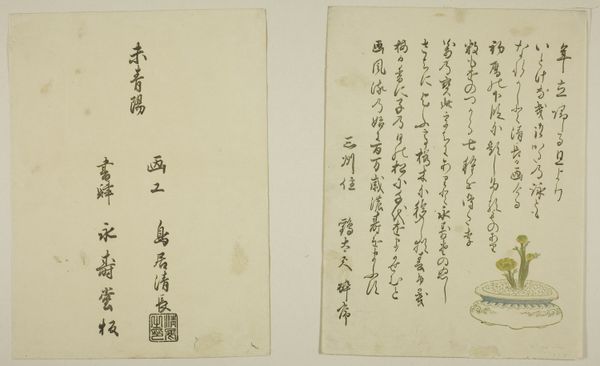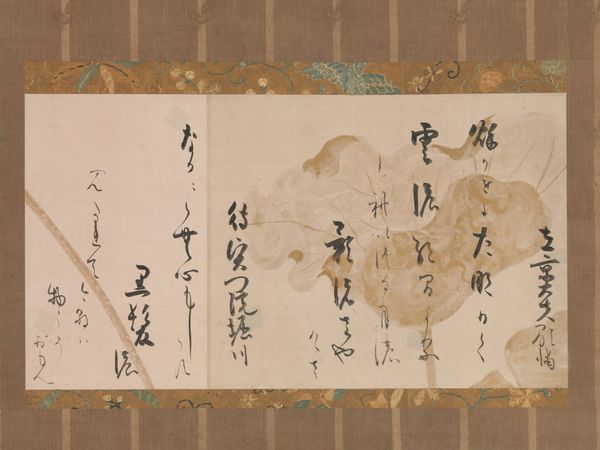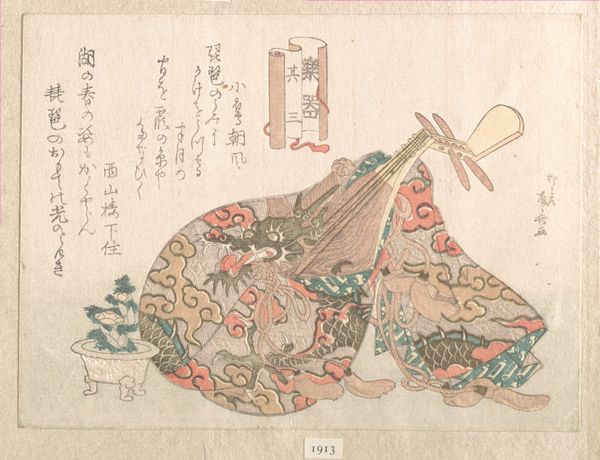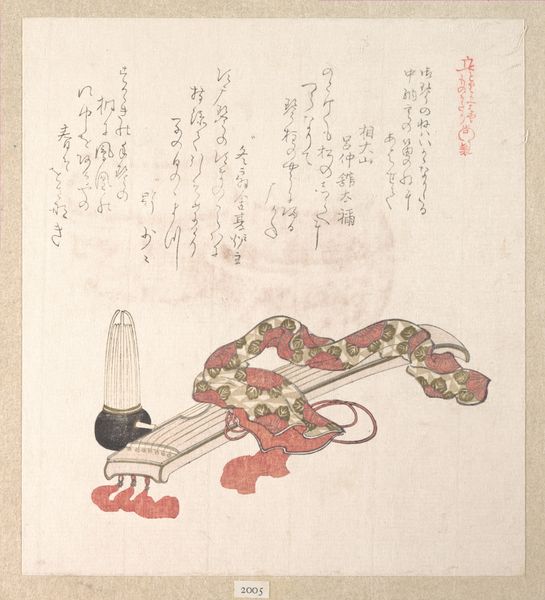
drawing, print, ink, woodcut
#
drawing
#
narrative-art
# print
#
asian-art
#
ukiyo-e
#
ink
#
folk-art
#
woodcut
Dimensions: 7 3/16 x 9 3/4 in. (18.3 x 24.8 cm) (image, sheet)
Copyright: Public Domain
Curator: This is an intriguing woodblock print entitled "(Greeting of the New Year of rat)", potentially from 1864. We know it's made with ink and that it's currently located at the Minneapolis Institute of Art. Editor: It's captivating! I’m struck by the contrast between the rough-hewn frame and the delicate rat, plus all the calligraphy. What should we make of the production and context of this particular ukiyo-e piece? Curator: Let’s consider the materiality first. It's a woodcut. Someone painstakingly carved this image into wood, applying ink repeatedly to produce numerous copies. That act of reproduction, that labor, makes it accessible, almost democratic in its consumption, don’t you think? Editor: Definitely! And folk art traditions are typically community based with the production being part of the local cultural making. Curator: Precisely! Ukiyo-e prints circulated widely, becoming part of everyday life. Notice, also, how the act of making links it to both high art and craft. The refined skill meets the needs of mass production. What does that say about societal values at the time? Editor: It challenges the established hierarchies, doesn't it? Making ‘art’ isn't confined to an elite practice but rooted in labor and distribution, impacting consumption! The materials themselves – the wood, the ink – they connect this image to the land, to the people who harvested them. Curator: Absolutely. And think about the conditions under which those materials were obtained and processed. Whose labor was involved? Who profited? This simple image becomes a lens through which we can examine complex social and economic relationships. Editor: That's a fascinating way to approach it. Seeing it as less about aesthetic expression and more about a record of material culture. Curator: Exactly! Material analysis redirects the narrative to value the usually overlooked labor that created such object. The work itself reflects societal infrastructure through material evidence. Editor: I hadn’t thought of it that way. Thank you. Curator: You’re most welcome! It’s all about appreciating that these prints weren't just pretty pictures; they were products of a specific time, place, and set of power dynamics.
Comments
No comments
Be the first to comment and join the conversation on the ultimate creative platform.
